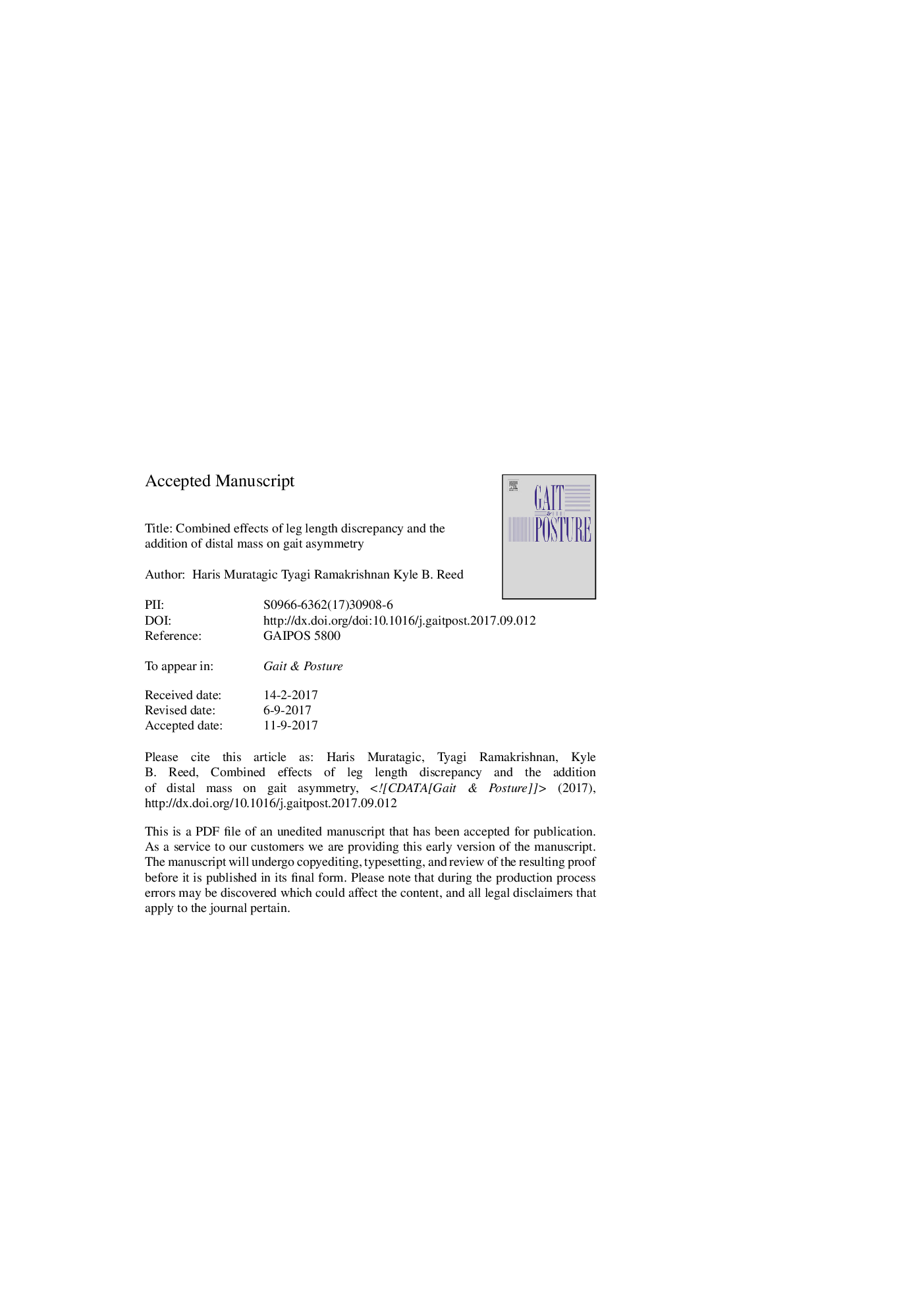| Article ID | Journal | Published Year | Pages | File Type |
|---|---|---|---|---|
| 5707658 | Gait & Posture | 2017 | 19 Pages |
Abstract
Asymmetries in gait often arise due to some form of physical impairment. For example, a leg length discrepancy (LLD) or the change of limb mass can result in asymmetric gait patterns. Although adding mass and LLD have been studied separately, this research studies how gait patterns change as a result of asymmetrically altering both leg length and mass at a leg's distal end. Spatio-temporal and kinetic gait measures are used to study the combined asymmetric effects of placing LLD and mass on the opposite and same side. There were statistically significant differences for the amount of mass and leg length added for all five parameters. Contrary to our hypothesis, there was no significant interaction between the amount of mass and leg length added. There were cases in all perturbations where a combination of mass and LLD make a gait parameter more symmetric than a single effect. These cases exhibit the potential for configurations with lower overall asymmetries even though each parameter has a slight asymmetry as opposed to driving one parameter to symmetry and other parameters to a larger asymmetry.
Keywords
Related Topics
Health Sciences
Medicine and Dentistry
Orthopedics, Sports Medicine and Rehabilitation
Authors
Haris Muratagic, Tyagi Ramakrishnan, Kyle B. Reed,
